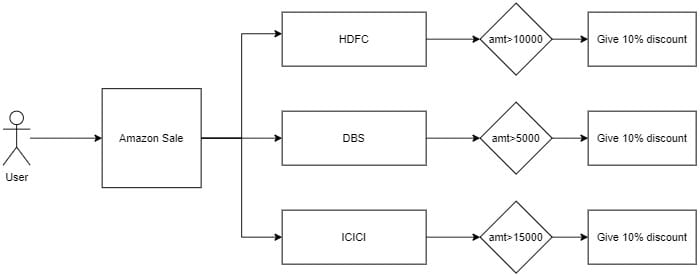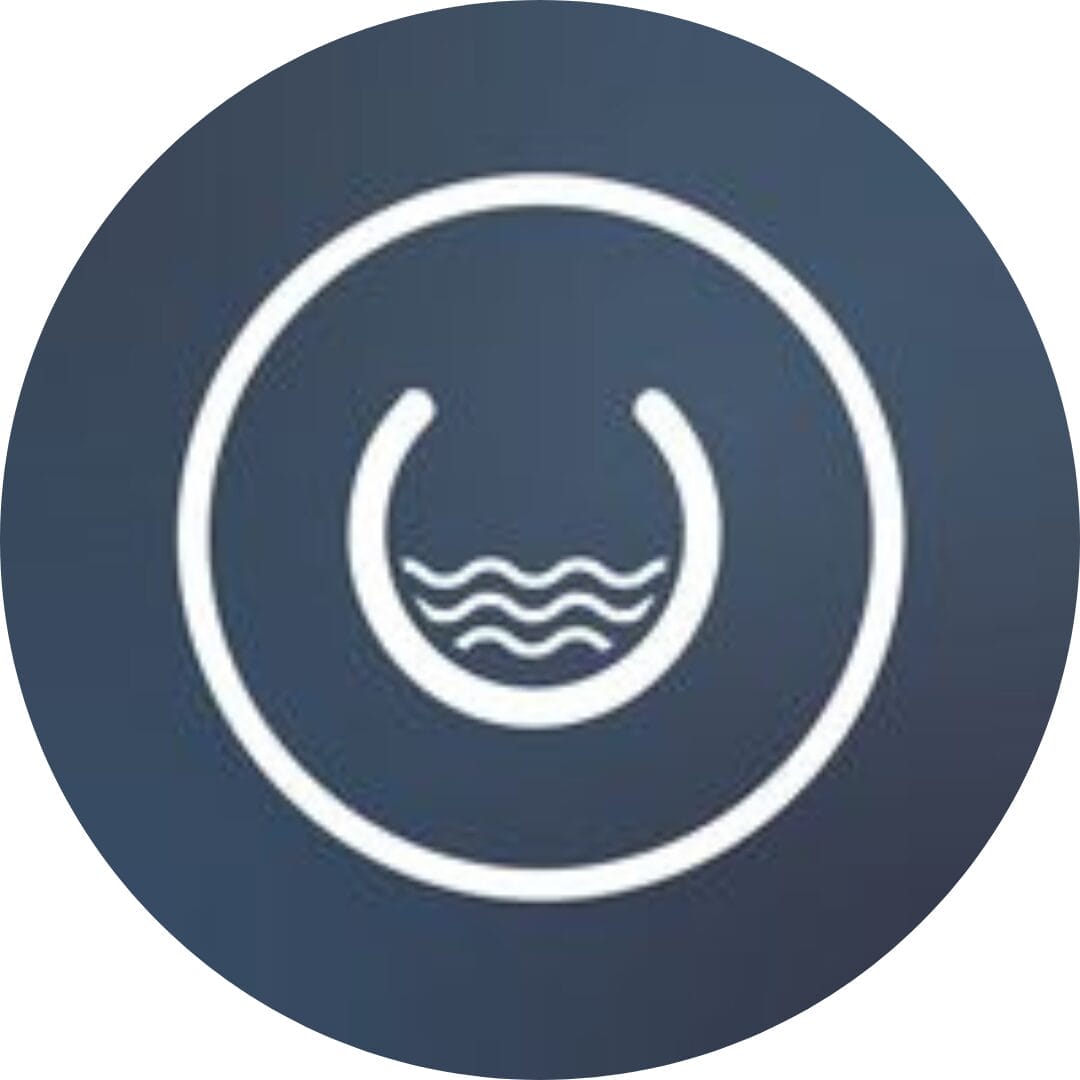A Rule Engine is a Logic, or a Condition, like “When some conditions are evaluated to true, then do some task.”A rule engine may be viewed as a sophisticated if/then statement interpreter. The if/then statements that are interpreted are called rules. Imagine a rule engine as a system that takes data and rules as input. It will apply those rules to the data and will give us an output based on the rule definition. In this article we will learn detailed about rule engine and some popular rule engines for java. Let’s take the example of online shopping where we like to give customers certain promotions or discounts. The if portions of rules contain conditions such as cart.getTotal() > 1000. The then portions of rules contain actions such as addDiscount(amount).
if (cart.getTotal() > 1000)
addDiscount(amount);
Above define shopping cart and customer as the data where rules will be executed if they meet the conditions defined in the ruleset.
Greater Flexibility
Keeping your rules into a Knowledge Base lets you adapt easily to your decisions when they are changing.
Easy to Understand
Rules are easy to understand as compared to other business logic. And this also creates a bridge between Business Analyst and Developers to understand and implement the business logic.
Reduced Complexity
It reduced the complexity as we no longer need to build the rule engine logic in the source.
Reusability
By keeping rules in one place leads to greater reusability of your business rules.
Drools
Drools is a Business Rules Management System (BRMS) solution. It provides a core Business Rules Engine (BRE), a web authoring and rules management application (Drools Workbench), full runtime support for Decision Model and Notation (DMN) models at Conformance level 3, and an Eclipse IDE plugin for core development.
OpenL Tablets
EasyRule is a lightweight rule engine API. It provides the Rule abstraction to create rules with conditions and actions, and the RulesEngine API that runs through a set of rules to test conditions and execute actions. Here is some core feature of the EasyRule:
Easy Rules
Easy Rules is a simple Java rules engine providing a lightweight and POJO based framework to define the business. It can create complex rules from primitive ones by using the composite pattern. This framework, in contrast to the most traditional rules engines, doesn’t make use of XML files or any Domain Specific Language files to segregate rules from the application. It uses annotation-based classes and methods for injecting business logic into the application. Easy Rules can be handy for developers to create and maintain applications with business logic that’s entirely separated from the application itself. On the other hand, as this framework doesn’t implement the JSR94 standard and the business logic has to be coded straight to Java code.
RuleBook
RuleBook provides a simple and intuitive DSL that is flexible. If you have a larger collection of Rules, we can build them as annotated POJOs and RuleBook can transform the whole package into a RuleBook instantly. It provides an easy-to-use Lambda enabled Domain Specific Language or using POJO.
In this blog, we are going to cover the Drools Rule Engine. Let’s take a real-time example so that we will get a better idea. Consider Amazon live sale is going on, in that Amazon is offering multiple discounts on different bank cards.

In the above diagram, the basic flow is if the customer is having an HDFC card then the customer will get a 10% discount on the purchase of > 10000. Similarly, DBS cardholders will get a 10% discount on the purchase of > 5000, and ICICI cardholders will get a 10% discount on the purchase of > 15000.
Steps–
So far so good. Now let’s start doing some code,
a. drools-decision tables
b. drools-core
c. drools-compiler
3. We will be going to keep the example simple so we will just create one package in that there will be basically 4 files.
a. DroolsConfig – To configure our drools setting.
b. OfferController – For rest service call.
c. OrderEntity – Pojo class
d. SpringDroolsApplication – Main class to run the project
4. In resources
a. application.properties – For changing the port
b. offer.xls – Decision table
Now we are done with the project setup, let’s add some code in class files.
DroolsConfig.java
package com.drools.example; import org.kie.api.KieServices; import org.kie.api.builder.KieBuilder; import org.kie.api.builder.KieFileSystem; import org.kie.api.builder.KieModule; import org.kie.api.builder.KieRepository; import org.kie.api.builder.ReleaseId; import org.kie.api.runtime.KieContainer; import org.kie.api.runtime.KieSession; import org.kie.internal.io.ResourceFactory; import org.springframework.context.annotation.Bean; import org.springframework.context.annotation.Configuration; @Configuration public class DroolConfig { private KieServices kieServices = KieServices.Factory.get(); private KieFileSystem getKieFileSystem() { KieFileSystem kieFileSystem = kieServices.newKieFileSystem(); kieFileSystem.write(ResourceFactory.newClassPathResource("offer.xls")); return kieFileSystem; } @Bean public KieContainer getKieContainer() { // Container created getKieRepository(); KieBuilder kb = kieServices.newKieBuilder(getKieFileSystem()); kb.buildAll(); KieModule kieModule = kb.getKieModule(); return kieServices.newKieContainer(kieModule.getReleaseId()); } private void getKieRepository() { final KieRepository kieRepository = kieServices.getRepository(); kieRepository.addKieModule(new KieModule() { public ReleaseId getReleaseId() { return kieRepository.getDefaultReleaseId(); } }); } @Bean public KieSession getKieSession(){ //session created return getKieContainer().newKieSession(); } }
OfferController.java
package com.drools.example; import org.kie.api.runtime.KieSession; import org.springframework.beans.factory.annotation.Autowired; import org.springframework.web.bind.annotation.PostMapping; import org.springframework.web.bind.annotation.RequestBody; import org.springframework.web.bind.annotation.RestController; @RestController public class OfferController { @Autowired private KieSession session; @PostMapping("/order") public OrderEntity orderNow(@RequestBody OrderEntity order) { session.insert(order); session.fireAllRules(); return order; } }
OrderEntity.java
package com.drools.example;
public class OrderEntity {
private String name;
private String cardType;
private int discount;
private int price;
//getters and setters
} SpringDroolsApplication.java
package com.drools.example;
import org.springframework.boot.SpringApplication;
import org.springframework.boot.autoconfigure.SpringBootApplication;
@SpringBootApplication
public class SpringDroolsApplication {
public static void main(String[] args) {
SpringApplication.run(SpringDroolsApplication.class, args);
}
}We are done with the coding part, now let’s check the API.
Case 1
Request Body
{
"name":"Mobile",
"cardType":"HDFC",
"price":9000
} Response Body
{
"name": "Mobile",
"cardType": "HDFC",
"discount": 0,
"price": 9000
}Case 2
The customer has an HDFC card and the order amount is greater than 10000
API URL: http://localhost:9091/order
Request Body
{
"name":"Mobile",
"cardType":"HDFC",
"price":15000
} Response Body
{
"name": "Mobile",
"cardType": "HDFC",
"discount": 10,
"price": 15000
} That’s it. We have successfully implemented the Rule Engine using the Drools decision table. The complete project you can find here.

In this article we understand the concept of rule engine and Some popular rule engines for java. Hope you like this article. If you have any doubts or suggestions regarding this please comment us.
Leave your competitors behind! Become an EPIC integration pro, and boost your team's efficiency.
Register Here

The Mindbowser team's professionalism consistently impressed me. Their commitment to quality shone through in every aspect of the project. They truly went the extra mile, ensuring they understood our needs perfectly and were always willing to invest the time to...

CTO, New Day Therapeutics

I collaborated with Mindbowser for several years on a complex SaaS platform project. They took over a partially completed project and successfully transformed it into a fully functional and robust platform. Throughout the entire process, the quality of their work...

President, E.B. Carlson

Mindbowser and team are professional, talented and very responsive. They got us through a challenging situation with our IOT product successfully. They will be our go to dev team going forward.

Founder, Cascada

Amazing team to work with. Very responsive and very skilled in both front and backend engineering. Looking forward to our next project together.

Co-Founder, Emerge

The team is great to work with. Very professional, on task, and efficient.

Founder, PeriopMD

I can not express enough how pleased we are with the whole team. From the first call and meeting, they took our vision and ran with it. Communication was easy and everyone was flexible to our schedule. I’m excited to...

Founder, Seeke

Mindbowser has truly been foundational in my journey from concept to design and onto that final launch phase.

CEO, KickSnap

We had very close go live timeline and Mindbowser team got us live a month before.

CEO, BuyNow WorldWide

If you want a team of great developers, I recommend them for the next project.

Founder, Teach Reach

Mindbowser built both iOS and Android apps for Mindworks, that have stood the test of time. 5 years later they still function quite beautifully. Their team always met their objectives and I'm very happy with the end result. Thank you!

Founder, Mindworks

Mindbowser has delivered a much better quality product than our previous tech vendors. Our product is stable and passed Well Architected Framework Review from AWS.

CEO, PurpleAnt

I am happy to share that we got USD 10k in cloud credits courtesy of our friends at Mindbowser. Thank you Pravin and Ayush, this means a lot to us.

CTO, Shortlist

Mindbowser is one of the reasons that our app is successful. These guys have been a great team.

Founder & CEO, MangoMirror

Kudos for all your hard work and diligence on the Telehealth platform project. You made it possible.

CEO, ThriveHealth

Mindbowser helped us build an awesome iOS app to bring balance to people’s lives.

CEO, SMILINGMIND

They were a very responsive team! Extremely easy to communicate and work with!

Founder & CEO, TotTech

We’ve had very little-to-no hiccups at all—it’s been a really pleasurable experience.

Co-Founder, TEAM8s

Mindbowser was very helpful with explaining the development process and started quickly on the project.

Executive Director of Product Development, Innovation Lab

The greatest benefit we got from Mindbowser is the expertise. Their team has developed apps in all different industries with all types of social proofs.

Co-Founder, Vesica

Mindbowser is professional, efficient and thorough.

Consultant, XPRIZE

Very committed, they create beautiful apps and are very benevolent. They have brilliant Ideas.

Founder, S.T.A.R.S of Wellness

Mindbowser was great; they listened to us a lot and helped us hone in on the actual idea of the app. They had put together fantastic wireframes for us.

Co-Founder, Flat Earth

Ayush was responsive and paired me with the best team member possible, to complete my complex vision and project. Could not be happier.

Founder, Child Life On Call

The team from Mindbowser stayed on task, asked the right questions, and completed the required tasks in a timely fashion! Strong work team!

CEO, SDOH2Health LLC

Mindbowser was easy to work with and hit the ground running, immediately feeling like part of our team.

CEO, Stealth Startup

Mindbowser was an excellent partner in developing my fitness app. They were patient, attentive, & understood my business needs. The end product exceeded my expectations. Thrilled to share it globally.

Owner, Phalanx

Mindbowser's expertise in tech, process & mobile development made them our choice for our app. The team was dedicated to the process & delivered high-quality features on time. They also gave valuable industry advice. Highly recommend them for app development...

Co-Founder, Fox&Fork
